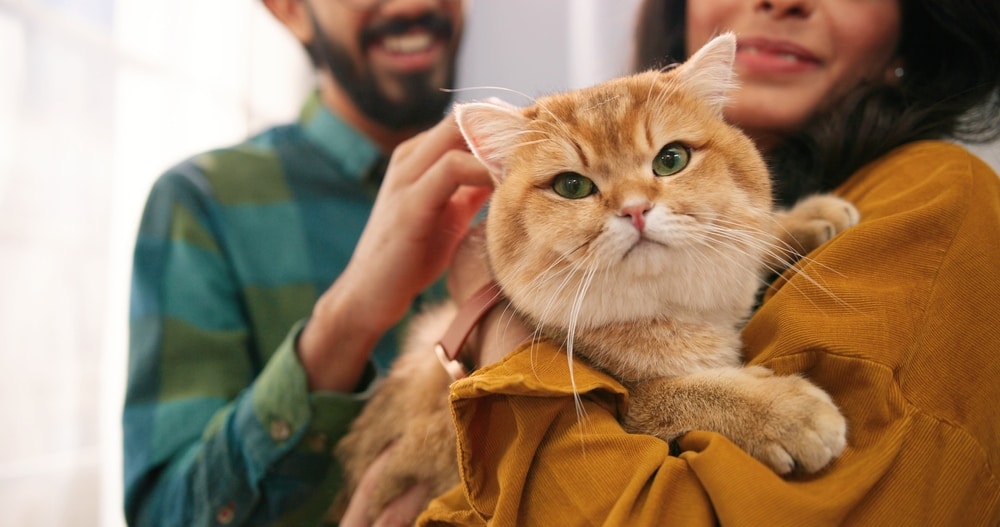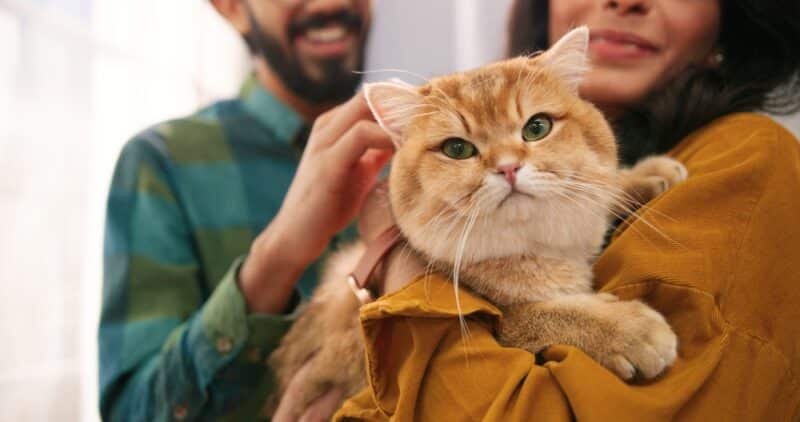Cats typically showcase aloof behavior, which can make it hard to know what they’re thinking. Unlike dogs, they do not normally display their grief openly. In a stressful and emotionally taxing time, such as a breakup, it may feel impossible to know how your pet feels.
However, your cat can become attached to your partner over time, especially if you have shared ownership, so the split may distress your feline. While a pet shouldn’t be an influential factor in whether to go through with a breakup, there are a few ways that you and your ex can be mindful of their feelings during the split.
Keep reading to learn more about how breakups affect cats and how you can help them through it.
How a Breakup Can Affect Your Cat
When long-term relationships come to an end, a variety of negative emotions can be hard to deal with. However, sharing a cat with your ex-partner can make this decision even more difficult. You may find yourself wondering whether your emotions are influencing your cat’s mental health and behavior, giving you even more to stress about.
It’s understandably tricky to navigate a breakup when a pet cat is involved, but you and your ex-partner must try your best to act in the cat’s interest. While both owners may want to keep the cat for themselves, it’s wiser to give full custody to the one capable of providing better care.
That means maintaining a steady routine, providing familiarity, and paying extra attention to the cat before, during, and after the breakup. This uncertain time can confuse and unnerve your cat, so you’ll need to work and make the transition easier for them.
This stress typically arises from the extreme changes involved in the process of a breakup, such as moving homes, forgetting about routines, or arguing loudly. These animals are highly intuitive, so it’ll take them no time to recognize when their owner is stressed or grieving.
When left unattended, these cats can develop similar mental health issues in the long run. However, the proper care can make them the ideal companion in a time like this, as they’ll be able to provide comfort when you least expect it.
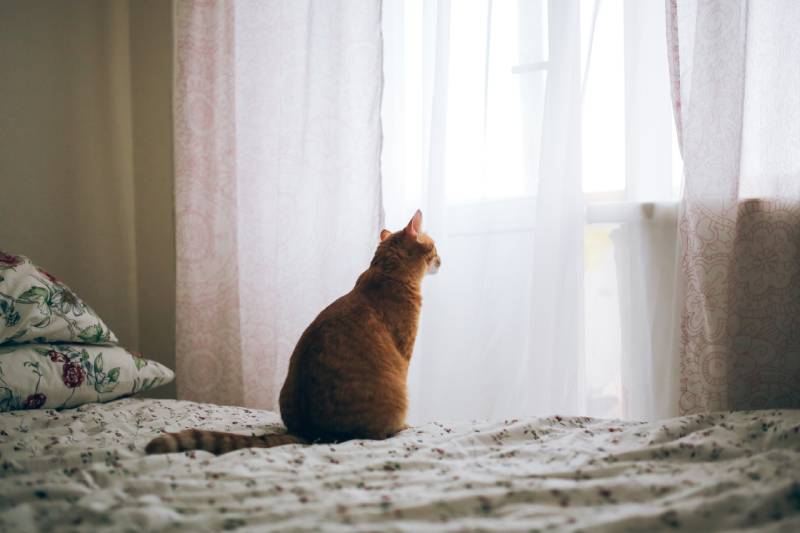
How to Minimize Your Cat’s Stress During a Breakup
During a breakup, the tension levels in the home can be high. You and your partner may be making multiple hard-hitting decisions during this time, so it’s crucial to stay mindful of your pet’s feelings.
Cats are highly intuitive about the feelings of the people around them, so it’s not uncommon for them to develop feelings of separation anxiety or even depression during such a moment. Living in a high-stress environment is never healthy for your pet, but there are some practices you and your partner can implement to make things easier for them.
Here’s what you can do to lower your cat’s stress levels during a breakup.
Consistency
The best way you can help your cat in such a situation is by keeping things consistent. Understandably, it can be hard to maintain your usual routine when going through a difficult breakup.
You may feel completely thrown off your usual schedule due to the stress and grief surrounding the uncertainty of your future. This can influence your cat significantly since they are creatures of habit who thrive on a harmonious routine.
While you work through the logistics of your breakup and the future, we recommend ensuring that your cat is eating, sleeping, and playing at the exact times that they always have. This will allow you to maintain your cat’s health and stress levels, so you can complete your healing journey without stressing about your pet’s well-being as much.
Arguments
Most importantly, it’s best not to argue in front of them. There’s no doubt that arguments can get heated and loud during separations, but it’s crucial to keep this aspect private from children and pets.
It can have a lasting effect on their mental health and in the worst-case scenario, leave them semi-permanently stressed and fearful. The intuitive nature of cats enables them to pick up on cues of anger and stress quickly, so they may even distance themselves from you in fear.
To protect you and your pet’s mental health, we recommend trying to keep things as calm and respectful as possible. If a verbal argument seems inevitable, it’s best to go somewhere private before completing your conversation.
Moving
After the end of a long-term relationship, one or both of you may need to move to different homes if you were living together. The trickiest part about this stage of a breakup is deciding who gets to keep full custody of the cat.
Ultimately, the right choice is the one who is more capable of providing a good home for the pet. If you end up with full custody of your cat, moving homes may be a complex process. In that case, it’s best not to move your cat until you are fully settled inside the new house.
You may feel pressured to take your cat to stay in temporary locations while you figure things out, but this can be highly stressful for them. Cats typically need help to adjust to new environments, and the constant change can become hard to deal with. Instead, the ideal choice is to leave your cat in the previously shared space until you’ve fully moved into the new place.
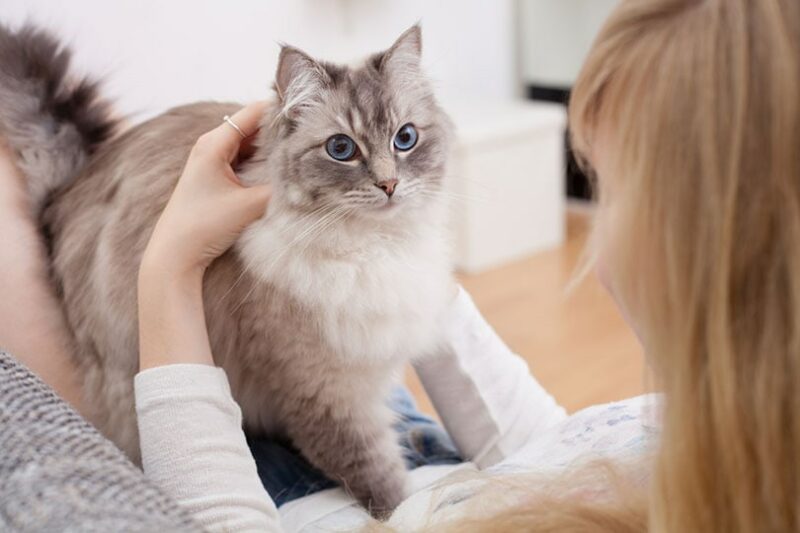
What Your Cat Needs After a Breakup
For most, the actual wave of emotions hits after a breakup instead of during it. The same can be said about your cat, which may start to feel separation anxiety once they recognize that your ex is not returning.
Here’s what you can do to help your cat work through the transition after your separation is finalized.
Routine
The most thoughtful thing you can do for a cat in such a situation is to maintain their usual routine, which is just as crucial before, during, and after a difficult breakup. These routine creatures will definitely find comfort in consistent meals, play times, and naps during an uncertain time like this.
Not only does an unmaintained schedule disrupt your cat’s stress levels, but it also makes them worry about whether you’re doing well. Your anxiety and grief can easily rub off on the cat, so a steady routine can help them ensure you’re safe and healthy.
Of course, this may feel hard to do after a difficult breakup, as you may need some time to rest. You’ll need to make specific arrangements to ensure your pet follows their regular schedule, but it’s a long-term investment in their happiness and stability.
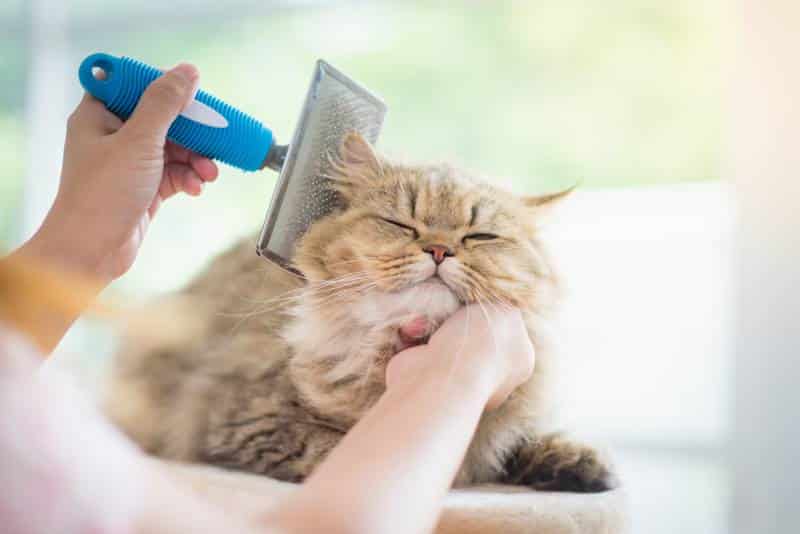
Familiarity
If you’ve moved into a new home with your cat, you’ll notice that they’ll face some difficulty adjusting to the new environment. It can take anywhere between weeks to months for a cat to fully adapt to a new home, depending on their breed, temperament, and past.
You can make this transition somewhat smoother by making the house into a home. The ideal way to do this is by placing old, familiar things around the home, such as blankets that may carry the old house’s scent, their favorite toys, and their personal beds.
Attention
Finally, you’ll need to go the extra mile to get rid of their separation anxiety. If your cat was attached to your ex-partner, they’d inevitably develop separation anxiety once they realize they won’t meet them again. This happens due to the grief and stress of losing a beloved owner.
We recommend staying ahead of the issue by keeping an eye out for the signs of separation anxiety, including clinginess, destruction, and whining. By paying extra attention to your cat, you can comfort them enough to soothe their worries. However, if you’re worried about the severity of your cat’s anxiety, it’s crucial to visit the vet to make sure it doesn’t worsen.
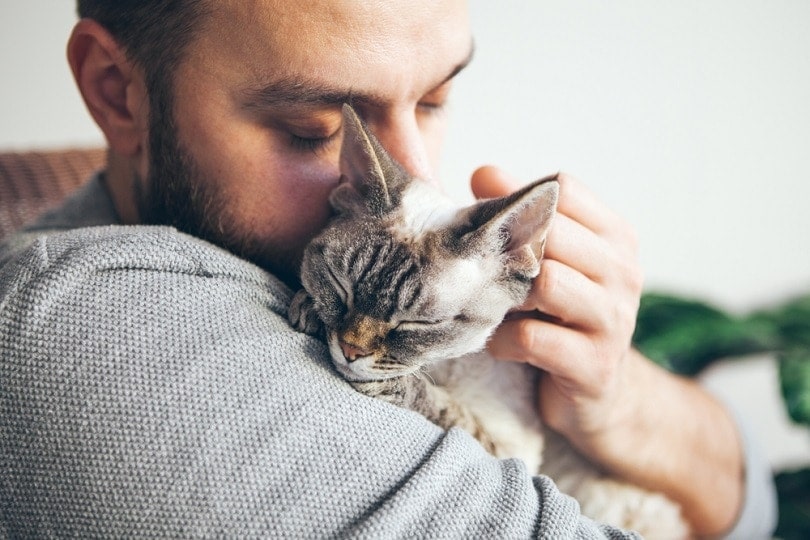
Conclusion
Breakups can be challenging, but they can be even more heart-wrenching when you share a cat with your ex-partner. In the midst of grief and stress, you’ll find yourself worrying over how your cat feels about never seeing your partner again.
While it is true that cats are emotionally affected by the end of a long-term relationship, there’s a lot you can do to ensure their temporary grief does not evolve into permanent separation anxiety or depression.
Featured Image Credit: VAKS-Stock Agency, Shutterstock

